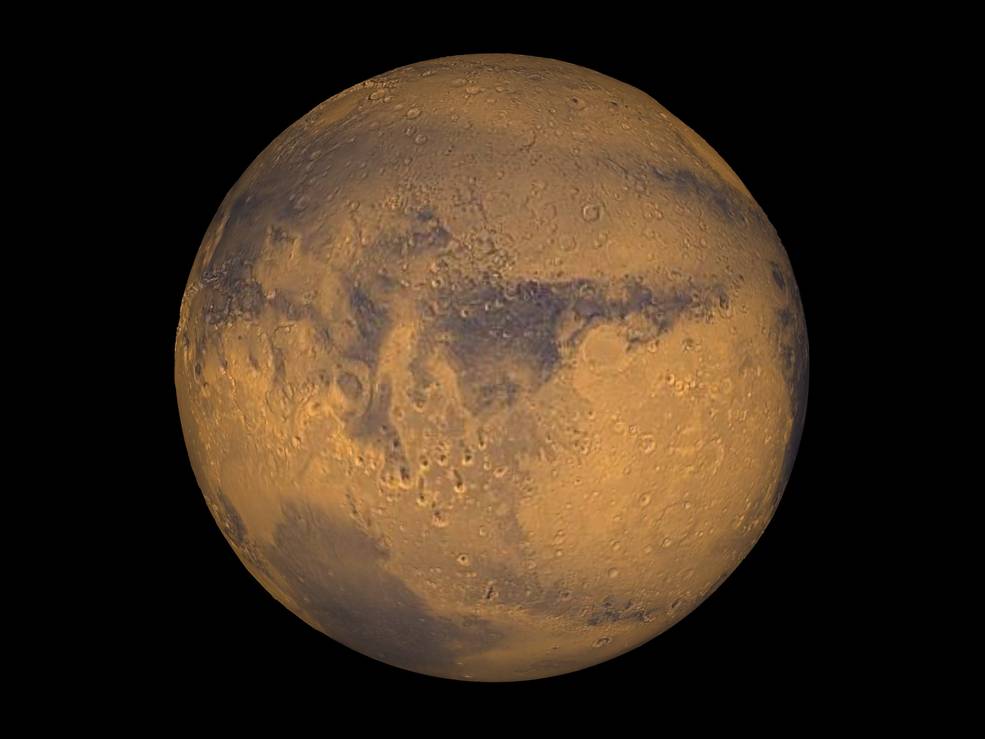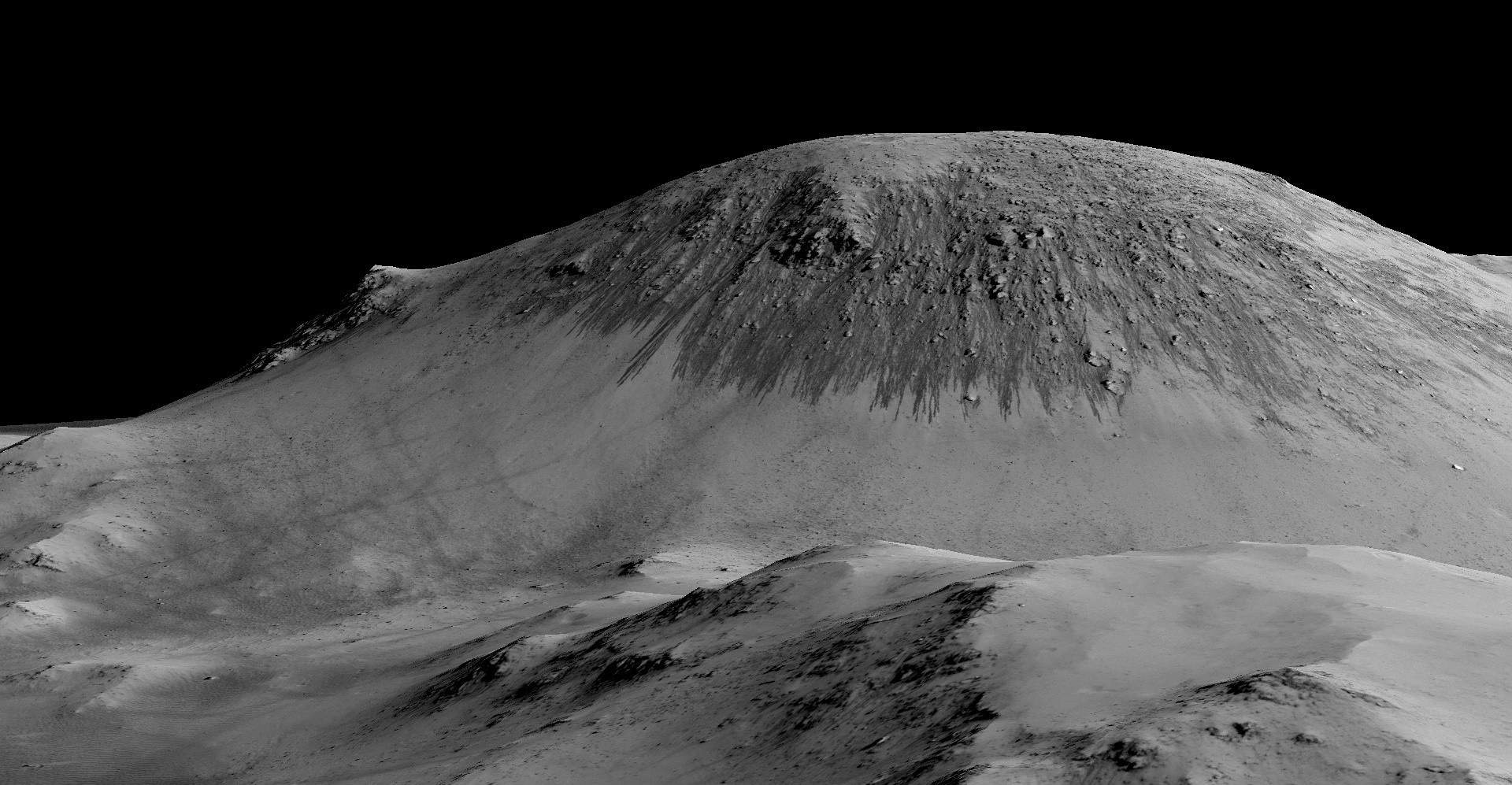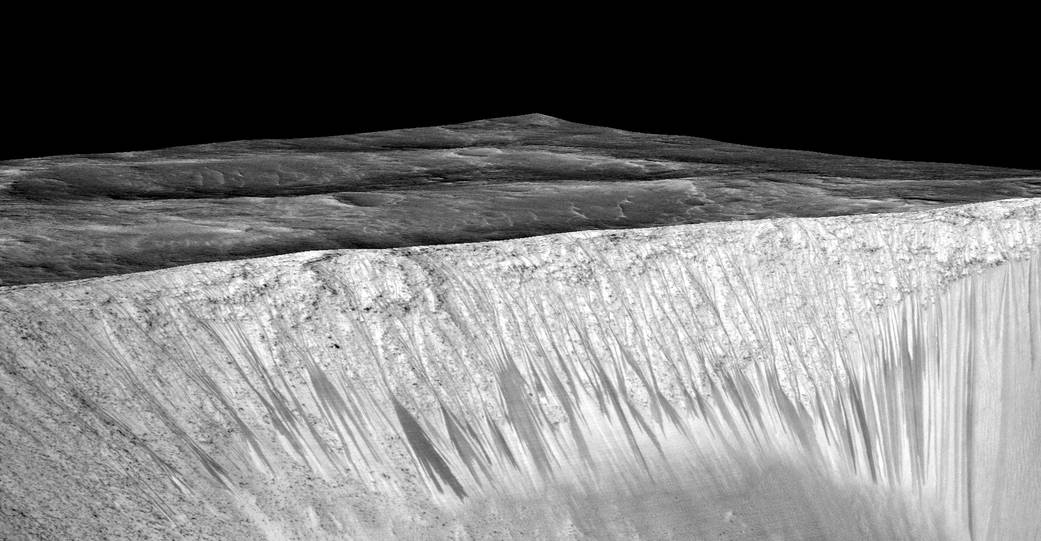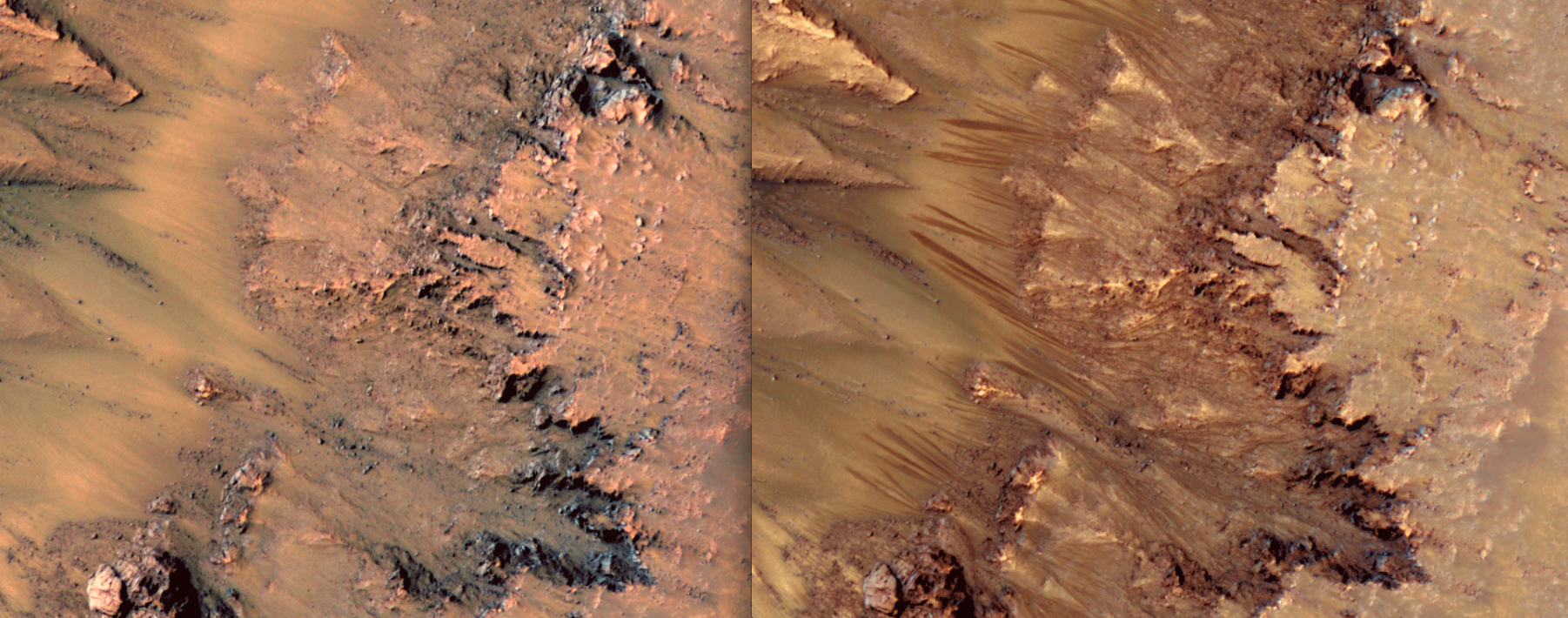Running water = possibly life on Mars

The discovery of liquid water on the Red Planet is an important step in the search for life on our planetary neighbour, but it will take many more missions before we might find anything
Published 29 September 2015
Running water. Well, a trickle anyway.
That’s the core of the Mars discovery announced by NASA on Tuesday morning. The story comes with two dimensions. The first is the scientific evidence for liquid water, and the second is the implications of liquid water on the surface of the Red Planet.
For many decades Mars was viewed as an arid desert. But with the recent era of exploration by rovers on the surface and circling orbiters, intricate patterns have been photographed in the planet’s regolith (a layer of loose, heterogeneous superficial material covering solid rock, including dust, soil and broken rock).
The most natural explanation of these features has been that they were caused by flowing water, since to the human eye they looked remarkably similar to patterns observed on Earth. Thus scientists have been able to conclude that Mars is the planet most like Earth, and that in the past it was covered in large part by extensive oceans.

Water ice has been found below the surface and caps of water ice appear at the poles, with the water ice in northern polar ice cap visible most of the year round.
The step to liquid water, though, has important implications. The first hint of its detection was made by a Nepalese undergraduate student, Lujendra Ojha, during an independent research project in 2011.
He was looking for changes in the features around gullies on Mars, but instead found irregularities on the nearby hillsides that did indeed change with time. These were dark finger-like features that appeared during the warmest parts of the summer and then disappeared during the winter. These features were soon found to be pervasive and given the name “Recurring Slope Linae” or RSLs.
The suspicion was they were caused by flowing water, but the range of temperatures for liquid water on Mars is just 0 to10 C, due to the low atmospheric pressure.

Definitive proof of liquid water had to wait for spectroscopy of these features. Absorption features in the spectrum of the surface containing the RSLs has identified percholate, a salt that would only be visible if it’s dissolved in water. And the strength of the absorption signature is correlated with the strength of the RSLs visible on the surface.
The discovery of “briney” water solves one mystery: a percholate solution is liquid from -70 to 24 C, greatly increasing the likelihood of water on the planet during the summer months.
NASA has had a long held belief that if they “follow the water” they will have the best chance of finding life outside of Earth. Generally, wherever water is found on Earth, microbial life forms are also found (although there is a hypersaline lake in Antarctica, the Don Juan Pond where, although it never freezes, there are no microbial lifeforms).
Scientists have found microbial life in the most extreme conditions on Earth: high temperatures, high radiation, no oxygen, deep underground and in particular in high salinity locations. The latter organisms are called halophiles, and can survive in regions with more than five times the salinity of Earth’s oceans.
Could such organisms also exist on Mars? Is life ubiquitous? Will life form wherever favourable physical conditions exist? These are the tantalising questions that might now realistically be answered by our Martian explorers.

Unfortunately none of the experiments currently operating on the Red Planet are capable of searching in the RSLs for life. The rovers are not designed to climb the sides of Martian mountains. Indeed, Martian life forms may not actually choose those locations as the most stable hospitable sites to colonise. Instead they may live underground: on Earth we have found microbial life several kilometres underground and this may also be a more sheltered environment on Mars.

NASA will now be focussed on designing experiments that can further explore the possibility of life on Mars.
It might be another decade before a carefully constructed experiment can explore the RSLs and the underground regions to detect actual life forms.
Complicating these endeavours is the possibility that the Earth rovers will contaminate the Martian surface. Rigorous protocols will need to be in place to ensure that we do not take Earthly organisms on our rovers to Mars and contaminate the surface with precisely the life forms we are searching for.
Interestingly, the leader of the next Mars Mission in 2020, Dr Abigail Allwood, is an Australian who graduated with her PhD from Macquarie University in 2006.
Science is leading the journey to Mars. This new discovery has opened a raft of possibilities: not just of finding the first life forms outside Earth, but also the real possibility of establishing a human colony on Mars. Accessible water would be the basis of a Martian settlement: water for human consumption and growth of plant life; oxygen to support human life and hydrogen as the basic energy source.
